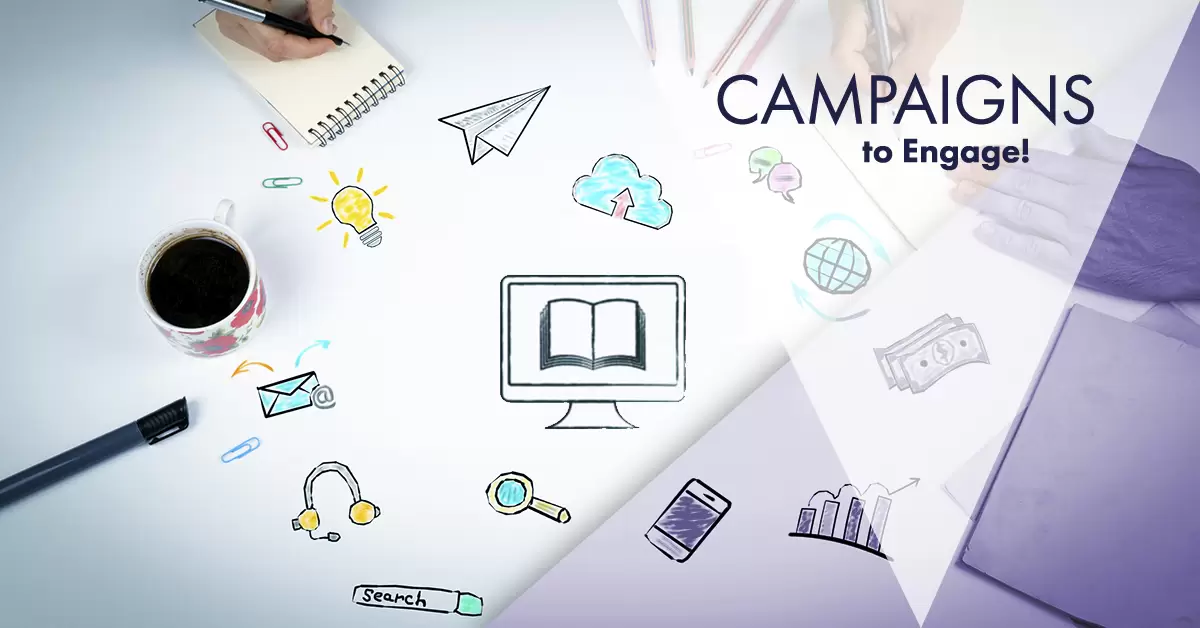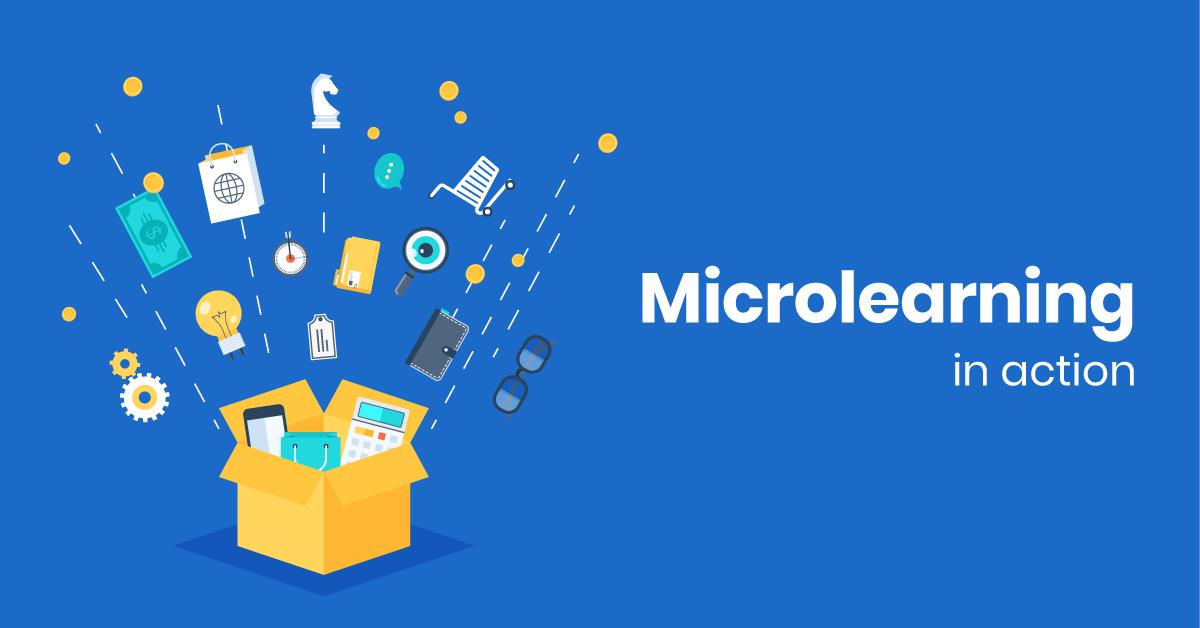If the words ‘marketing campaign’ ring a bell, then that’s how exactly this paradigm is embodied. Marketing concepts such as ‘owning a niche,’ ‘top of mind,’ ‘perceived value,’ ‘the Law of Failure,’ the Law of Acceleration,’ and ‘the Law of Resources,’ become bases for content delivery for a learning campaign.
Learning campaigns take on a marketing approach towards making an impact on learners. The identification of influencers and the recognition of and capitalizing on workforce behavior become foundations of campaign-based learning. The end goal: using these ‘points of contact’ to market learning and actuate behavioral change.
Learning campaigns take on a marketing approach towards making an impact on learners.Share on
What exactly is a learning campaign?
When we first see the word ‘campaign,’ the first thing that comes to mind is a long-term strategy. And yes, this is true. Unlike the traditional approach to corporate training – one off learning sessions – campaign-based learning somehow flips this method.
This type of approach puts the Ebbinghaus Forgetting Curve into great consideration. The Forgetting Curve posits that forty percent of the information gets forgotten after forty minutes. More than half of the subject matter gets forgotten in an hour. At the end of the day, only a fifth of the information gets retained by the learner.
So, instead of a one-off training initiative, a learning campaign distributes learning across a longer span of time – a year, for example. Information is tackled in bite-sized bits and the corresponding skills practiced and applied accordingly. Doing so spaces learning and maximize retention.
Moreover, this unique approach also employs different types of marketing/branding activities as instructional methodologies. These events are called ‘points of contact’ (POCs).
And by definition, these are the different activities – both online and offline – employees engage in which can be used to ‘market’ learning to the intended audience.
Examples of offline ‘points of contact’ (POCs) are company town halls, a CEO talk, meetings, posters, teaser videos, and flyers. Online examples include email, videos, eLearning modules, questionnaires/surveys, and company newsletters, social media, or blogs.
Do take note that, while numerous approaches might be employed during a campaign, all of the POC channels must be bound by the same learning objectives.
Aside from using marketing concepts to make learning more relevant to the intended audience, campaigns also are highly-dependent on the company culture.
‘Points of contact’ are activities that the learning audience is used to (and find most effective) – and these are dictated by the company’s culture.
What are the benefits of a learning campaign?
We’ve discussed what learning campaigns are all about. Let’s now move on to how they can be of help to both the learners and the campaign creators. Here are the three biggest benefits of campaign based learning:
Better retention of information
We’ve mentioned that a learning campaign is highly dependent on the right amount of information and the spacing between each point of contact (learning session).
The right amount of both benefits the learner by avoiding cognitive overload. It also gives the learner the right amount of time to practice and master newly-learned skills after each POC.
Makes creation of learning materials and resources less demanding
A learning campaign makes creating learning resources less demanding. Other training methods like eLearning and classroom learning involve an entire team to execute. Furthermore, relative to learning campaigns, more effort is required to produce just an hour of eLearning or classroom training.
Campaign-based learning, on the other hand, requires less effort because smaller assets can be created over a longer period of time. Think of it as ‘creating learning materials in installments.’ This makes creating resources less demanding and less time-consuming for the creator.
Leaves more room to revise and edit materials
Unlike other learning methods, a learning campaign allows the creator to revise materials as the campaign moves along.
Given that new information and updates come up every now and then, it would be easier to revise and edit the learning materials. With the different POCs available for a learning campaign, updates can easily be rolled out without too much disruption on the campaign.
How do you implement a learning campaign?
Like any other training strategy, campaign-based learning also involves a well-structured process. More importantly, it also follows the usual learning and development cycle. The difference, however, lies on the particulars about the points of contact and the follow through in terms of design and delivery.

Here are five steps on how to implement campaign-based learning:
1. Do a needs analysis
One of the most important parts of any training initiative is doing a needs analysis. It identifies the audience and recognizes their learning needs.
Of course, data plays a big part in this phase. And just to simplify the process, you can use different data sources for analysis like performance evaluations, employee surveys, management feedback, and such.
The most important part though is that doing a needs analysis delves into the learning needs of the intended audience. And as a result, needs analysis lays out the foundations of the entire learning campaign by defining its overall objectives.
2. Identify points of contact
Points-of-contact or POCs are what make campaign-based learning unique. This approach to learning is not just limited to formal methods like the classroom, eLearning, coaching, and such. It can also involve more informal methods like emails, meetings, town halls, blogs, etc.
The best way to select the points of contact is to look at what activities the employees and the company already have in place. Remember that we mentioned that POCs depend on the company’s culture? Find out what activities the employees enjoy and are engaged in and capitalize on those.
3. Adapt the message to each channel
This is the phase of the campaign where the marketing concepts come in. Based on the research done on the second step, each POC channel must be set-up to send the content through. Furthermore, each POC also has its own particular drawing element, and the creators must ensure to take advantage of those.
This phase is also another important part of learning campaigns as marketing will be used to get learner buy-in and to also gather enough interest and support for the program. The challenge for the creators is adapting the content to the appropriate delivery method. In doing so, the message must be relevant and applicable for each POC channel. Avoid overdoing it by being repetitive though.
4. Follow through by recurring messages
Make sure to follow-through on the campaign through regular check-ups on the learning audience. Pop-up quizzes, reminders, and different types of media (images and short videos) are the best ways on how to do this. Scheduling follow-up activities at relevant intervals ensure that the learners retain the information.
5. Evaluate the Campaign
At the end of the day, results will always have the last say – no matter how engaging, fun or creative the campaign was. And like any other learning initiative, results (and the corresponding return-of-investment), will always determine the success of the campaign.
Always remember to ask the following questions when evaluating the campaign:
“Did the intended audience think that the approach was helpful for them?”
“Did the learning checks show that the delivery of the subject matter was effective?”
“Are the learners applying the newly-learned competencies to their work?”
“Was there an impact on the learners’ performance; thus also on the organization as a whole?”
Conclusion
Learning campaigns certainly show how much the industry has become more adaptable to interdisciplinary approaches. At first, it was technology and the different methodologies that come along with it. Now, marketing is also becoming a part of learning approaches too!
And take note that it’s not just about marketing courses to the intended audience, but using marketing concepts on content delivery itself! Who would’ve ever thought of that? Now, we sure are excited for what the future holds for the learning industry!



